Are you building or updating a coop, but you’re not sure what chicken nesting box size to use? You’re in the right place!
I’ve been raising chickens for years and have experimented with many different sizes and styles of nesting boxes along the way. The type and size that you need depends on your flock and priorities and I’ll help you sort through every aspect.
I’ve also provided links to my favorite nesting boxes (DIY and pre-built!), plus solutions to common nesting box problems that you’ll likely encounter along the way. By the end of this article, you’ll confidently be able to build or select the best nesting box for your flock.
Lets go!
*Disclosure: This post may contain affiliate links to products (including Amazon). I’ll earn a small commission if you make a purchase through my link, at no additional cost to you! Regardless, I only link to products that I personally use on our homestead or believe in.
Chicken Nesting Box Style
Before we jump into the chicken nesting box size, it’s important that we cover the types of nesting boxes that are available to you. There are several types of designs, depending on what your goals are in your coop!
Individual Nests
Individual nests are the most common design that you’ll see. They are sized to fit 1 hen, however, you may notice 2 (or 3!) trying to squeeze in there at a time. Egg laying can be a social event sometimes.
In my experience, individual nesting boxes are the style that hens enjoy the most. I have both individual and group nests, and there are always way more eggs in individual laying boxes. They like their privacy!
Group Nests
Group nesting boxes are another design that can be used in the coop. It utilizes a large nest that can fit several chickens at once. The benefit of this style of nesting box is that it is easier to construct (vs several individual boxes) and makes egg gathering easier.
A negative of this style is that there’s less privacy for the hen to do her business, so she may decide to lay somewhere else. Also, it comes with an increased risk of eggs being broken from multiple hens bumping around in there.
Rollaway Nests
This is my favorite bonus feature! A rollaway nest has a surface that is slightly tipped at an angle so that the freshly laid egg gently “rolls away” from the laying area to a protected collection tray. You can find this feature on individual and group nests.
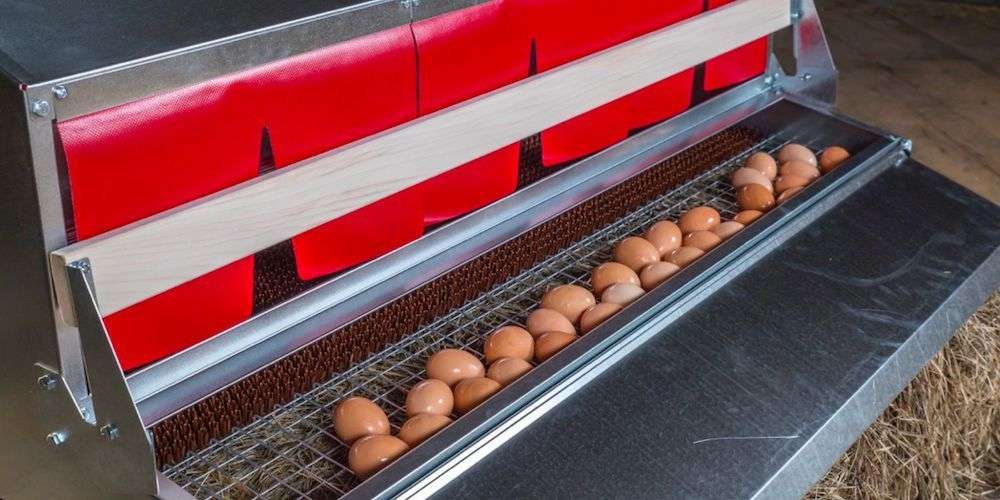
A rollaway nesting box keeps the eggs clean, protected from egg-eaters and reduces the hen’s instinct to go broody. Broodiness (the hen’s desire to sit on eggs so that they develop into chicks) is often triggered by the sight of a tempting pile of eggs. While this can be desirable at times, often it is a hassle and not encouraged.
Trap Nests
Trap nests are featured on individual nests and are neat because they have a trap door that swings down as soon as a hen enters the nest. The purpose of a trap nest is so that you can identify which hen lays what type of egg.
This is not a super common design, but it is often used in poultry breeders or backyard chicken keepers who are just curious about who lays what. I would love to have this type someday!
Chicken Nesting Box Size
The nesting box size that you should provide will depend on a few factors. First, is whether you plan to use the nesting for egg laying or for natural egg incubation (the hen sitting on eggs to hatch chicks). Second, your nesting box size will depend on what kind of chickens you have!
Nesting Box Size for Egg Laying
Chickens range from 2 lb bantams to 14 lb heavy breeds, so they definitely have different requirements. If you have chickens of all sizes, I’d recommend the middle size for standard breeds or provide a few different sizes, if possible!
Bantam Breeds
- 10” wide x 10” deep x 12” high
Standard Breeds
- 12” wide x 12” deep x 14” tall
Heavy Breeds
- 14” wide x 12” deep x 14” tall
Nesting Box Size for Incubating Eggs
If you have a broody hen, it can be a super exciting experience to have her sit on eggs to hatch some chicks. I usually have 4-5 broody hens hatch chicks every spring and it’s one of my favorite things.
Nests used for incubation need to be a bit bigger to give the hen a comfortable and supportive space for 21 days. Ideally, the brooding nest should be 14 inches square with sides that are 16+ inches tall. A 4-6” tall lip at the front is helpful to keep the developing eggs and nesting material from falling out.
Twenty-four hours after the hatch (if all of the chicks are fluffed out), make sure to remove the nest from the brooder. This is important because the chicks are usually too small to make it over the 4-6” tall lip at the front. They’ll need to get out to reach their food and water!
Best Chicken Nest Features
Yes, you can just use a random bucket or box, however, there are a few key features that can really make your nesting box function like a dream.
- A perch in front of the nesting box so the hen has somewhere to land before gently climbing into the nest. This reduces the risk of your eggs being broken.
- A lip at the front of the nest to keep bedding and eggs from rolling out.
- A 45 degree sloped roof above the nests will prevent the hens from roosting on top
- Curtains to encourage hens to lay there. They like dark, safe places.
How Many Hens per Nesting Box?
The number of nesting boxes you need for your flock depends on the style of nest that you’ve chosen to use. If using individual nests, you’ll need more than if you’re using group nests.
Individual Nesting Boxes
When using individual nests (fits 1 hen), a good rule of thumb to follow is 1 nest for every 4-5 hens. Of course, you’ll likely notice that there are some “favorite” boxes among your flock where multiple hens will try to pile in there at once, where other boxes go unused. This is totally normal and I just let the hens do their thing.
How many nesting boxes do I need for 6 chickens?
- Use 2 nesting boxes for 6 chickens.
How many nesting boxes do I need for 12 chickens?
- Use 3 nesting boxes for 12 chickens.
Group Nests or Community Nests
Group or community nests are less common, but some people really like them! They are certainly easier to build than multiple individual boxes. However, they come with a risk of broken eggs from multiple hens walking through it.
It is recommended to provide a minimum nesting space of 9 square feet (3 feet by 3 feet, for example) for every 100 hens.
DIY Chicken Nesting Box Designs
If you want to save some money and make custom nesting boxes, then here are some great plans that you can utilize! It can be as simple as a 5 gallon bucket or as complex as a custom rollaway nest. Just be mindful of the finished nesting box size and adjust the plans according to your flock’s needs.
- Check out 13 Free DIY Nesting Box Plans by Chickens and More. So many options here!
- Here is an External Nesting Box Plan by My Outdoor Plans. This is a great plan to use if you want to save room in the coop, plus it makes egg gathering super easy from the outside!
- This Triple Nesting Box by Remove and Replace is a super simple design that can be used anywhere in the coop!
- This 6-Box Nest Design is a classic one that you’ll see in most coops! A little more complex to build, but totally do-able.
My Favorite Pre-Made Chicken Nesting Boxes
Don’t have time for a DIY option? I totally get that! Here are some of my favorite models on the market that have easy installation options.
The Homesteading RD's Product Picks: | |
This is about as basic as nesting boxes come, but they are cheap, moveable and still work fairly well. I don't even think you could build your own for this price! There's no perch in front, so the eggs may get broken/dirty. I use a few of these around my coop for temporary nests as needed (training new pullets, encouraging hens to go broody, etc.). | |
If you have a flock size of 5-10 hens, then this is an awesome choice! It features a perch and rollaway design to keep your eggs clean. The removable trays and metal design makes this nesting box extremely simple to clean. The only negative is it would be challenging to heat each egg collection tray individually to keep eggs from freezing in the winter. | |
This one is the same design as the 2 Compartment Roll Out Nesting Box above, but is a better fit if you have a flock size of 10-15 hens. | |
If you have a larger flock (20+) and have cold winters, this is the BEST option out there and the exact set-up that I have in my coop. It's a great space-saver, keeps eggs clean, plus you can easily heat the large roll out tray to keep your eggs from freezing in the winter. You can even flip up the perching bar to keep your hens from sleeping there at night. Super neat! | |
If you have a large flock (30+), then this is the best bang fror your buck! The perching bars in front make it easy for your hens to access the nest, however they do not flip up like the Best Nest Box. Also, the description says that it's a rollaway nest, but its not. This is a stationary nest. Made in the USA! | |
Chicken Nesting Box Placement
Hens are most likely to lay if they have a space that is dark, quiet and feels safe. Choose a location that is not very busy – ideally, away from feeders and inside the coop. I like to attach my nesting boxes to a south wall so that the sun won’t shine into the boxes.
Should Nesting Boxes Be Elevated?
Yes and no. Ideally, nesting boxes should be raised 18-20 inches off the ground, but still lower than your roosting bars (otherwise, they’ll start roosting on the nests). This can be achieved by securing it to a wall or creating a sturdy platform. This keeps rodents and snakes out while also discouraging the hens from scratching in there and accidentally breaking the eggs.
Pullets
However, if you have young pullets who are just learning how to lay, they may have trouble figuring out the nests if they are elevated. Start with the nests on the ground until they have it mastered, then gradually increase the height until you’ve reached 18-20 inches.
Broody Hens
Lastly, if you are leaving out a temporary nest to catch a broody hen, put this on the ground with wooden eggs. I use this method all of the time! Once a hen has settled in for a day or two, I simply move the entire nest (hen and all) at night into my secure brooder location and swap out her wooden eggs with fertile ones. Easy peasy!
How to Train Hens to use Nesting Boxes
Hens certainly have their own opinions on where they like to lay their eggs, so it might take a bit of time to get them warmed up to the idea of using your nesting box. Another challenge is training young hens who are just starting to lay for the first time. They don’t know what to do!
Start with your nesting box on the ground
This can be really helpful, especially if you have young hens who are laying for the first time and don’t have older hens to model after. Chickens naturally lay their eggs in ground nests in the wild, so teaching them to lay in an elevated location may take a bit of training.
Start with your nesting box on the ground and after they have mastered it, gradually increase the height until it reaches 18-20 inches. However, you may notice that your hens then abandon the nest and start laying underneath it once it is high enough.
This often happens with my hens, so I’ve experimented with making a plywood “skirt” around the bottom to prevent this. It worked OK, but ultimately I have settled on keeping my nesting box just 6” off the ground (see photo below). It’s a happy medium and since I use a rollaway nest, I don’t have to worry about rodents, snakes or my hens scratching in the eggs.
Add wooden eggs
This is THE best way to train your hens to use the nesting box. Hens naturally want to lay their eggs next to other eggs. So, by placing some wooden eggs in the nesting box, the hens will be drawn to add to that pile. Golfballs works in a pinch, too!
If I’m trying to encourage a hen to go broody, I’ll set up a big pile of wooden eggs in a temporary nest and that is simply irresistible to some of my hens!
The Homesteading RD's Product Picks: | |
Perfectly shaped wooden eggs that have a natural appearance and are hard to break. Your hens won't know the difference and will be drawn to lay their eggs next to them. | |
Common Issues With Nesting Boxes
While the whole nesting box situation seems like it should be simple, it rarely goes as planned. Haha! Here are the most common issues that chicken keepers can expect to see and how to go about fixing them.
Hens not using the nesting boxes
- Lower the nesting boxes to the ground – sometimes the hens just don’t know that the nests are up there and need time to acclimate
- Add wooden eggs or golf balls to the nest – hens like to lay their eggs where other eggs are. This will encourage them to lay where you want them to.
- Spray for mites with Elector PSP – Sometimes mites can take up residence in the nesting boxes and will feed on the hens when they go in to lay their eggs. I know this product is pricy, but it’s the most effective and safest product on the market. There is no egg-withdrawl period after using it.
- Fold up the curtains – curtains are wonderful for privacy, but the curtains can also block the view of the nest. If the hens don’t know there’s a nest back there, they might never find it. Start by taping or stapling up the curtains until the hens are using the box regularly.
- Assess the location – Is it too busy? Noisy? Light?
Hens eating eggs
While it sounds weird, hens will definitely learn to eat their own eggs once they figure out how tasty they are. All it takes is 1 broken egg in the nest and a curious hen… and it’s all over. Once a hen starts eating eggs, it can be really hard to get her to stop.
The best way to stop hens from eating their own eggs is to use a rollaway nest so that the hen never has the opportunity to eat it in the first place. If you don’t have access to one of these, using wooden eggs in the nest might help. It’s a shock to the hen to peck a wooden egg and that alone may teach her that pecking at eggs isn’t as fun as it once was.
Dirty or broken eggs
This is a super common issue in the coop and can easily be remedies with the following solutions:
- Add a perch to the front of the nesting box so the lend has a place to land before gently walking into the nest
- Utilize a rollaway nest
- Add some wooden eggs to the nest
- Ensure that you are keeping the bedding fresh in the coop and nesting boxes
Hens are sleeping in the nesting box
I’ve been struggling with this off and on for years! While it may seem harmless, it’s not a great behavior to encourage. Mostly, because the hen will poop while she is sleeping and you’ll end up with a dirty nest and eggs. Here’s my best tips for discouraging this:
- Ensure that your nesting boxes are positioned below the roosting bars. Hens naturally want to roost as high as possible. Therefore, if your nesting box is the highest place they can get to, they’ll go for it every time.
- Use the Best Nest Rollaway Box that features perching bars that you can flip up at night (see photo below) to prevent hens from entering. Just be sure to flip them back down the next morning!
Hens are sleeping/roosting on top of the nesting box
This can be a problem, too! Here’s how to fix it:
- Ensure that your nesting boxes are positioned below the roosting bars. Hens naturally want to roost as high as possible. Therefore, if your nesting box is the highest place they can get to, they’ll go for it every time.
- Ensure that the roof is slanted at 45 degrees so that roosting is no longer possible
Can a nesting box be too big?
Honestly, not really. It’s better to be too big than too small in my opinion. If you overshoot the size a bit, then it’ll start operating as a communal nest. The one risk with communal nests is that it increases the risk of broken eggs from having multiple hens walking through it.
If the nest is too small, the hen will have trouble turning around and may break the eggs in the process. Or, the hens may choose not to use the nesting boxes altogether!
Other Posts That You’ll Love
- Brooding in Poultry – What You Need to Know!
- Chicken Coop Winterizing – 6 Helpful Tips!
- Are Chickens Noisy?
Final Thoughts
Well that was fun! That’s about it for the wild wild west of chicken nesting box sizes. I hope you are feeling well-informed of all of the options out there and equipped with what to do if things aren’t going your way.
*Information in this article was referenced from personal experience and/or from my favorite chicken books Storey’s Guide to Raising Chickens and The Chicken Chick’s Guide to Backyard Chickens, unless otherwise noted.

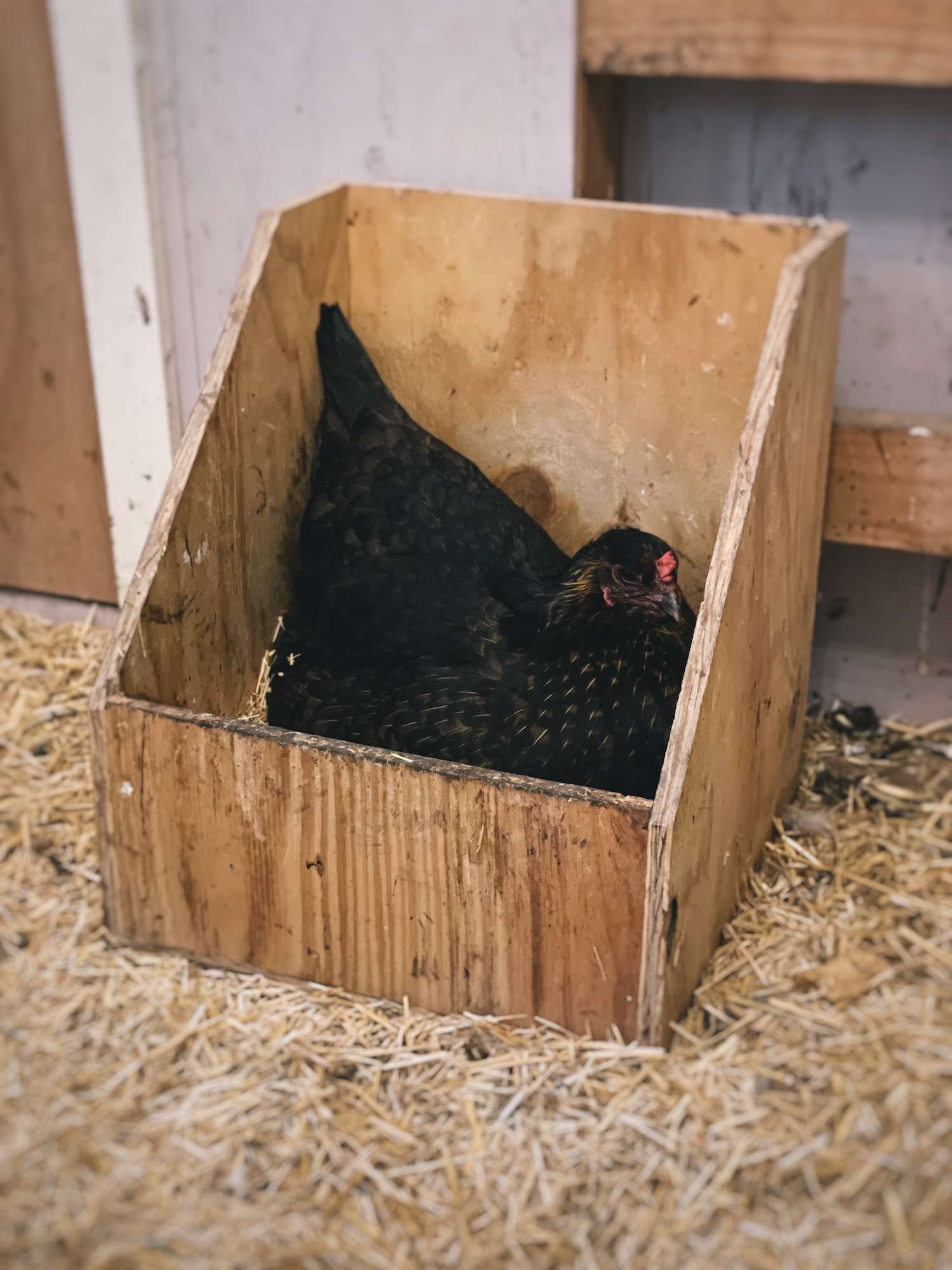
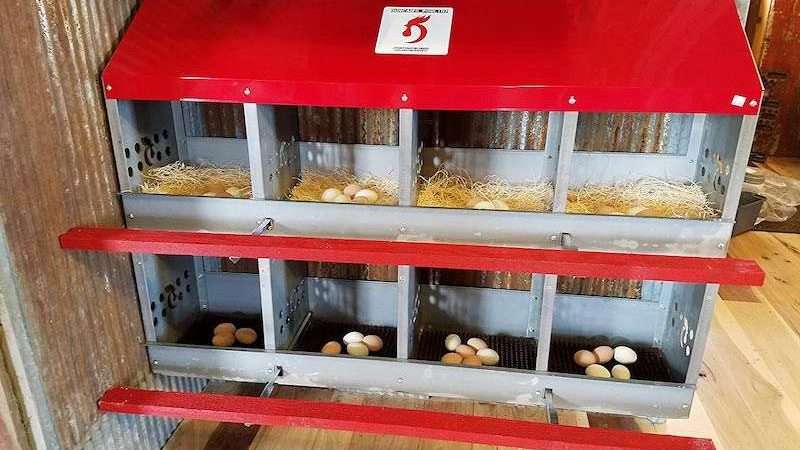



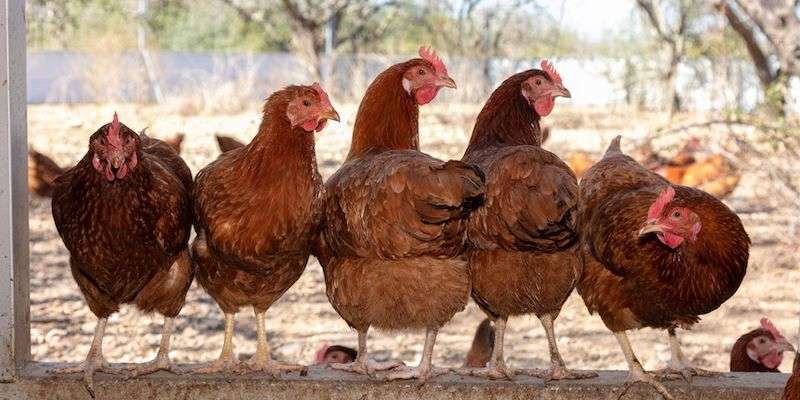





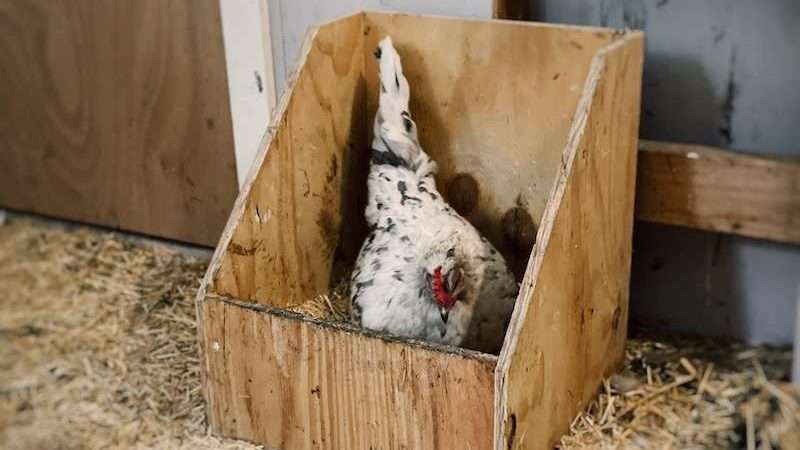
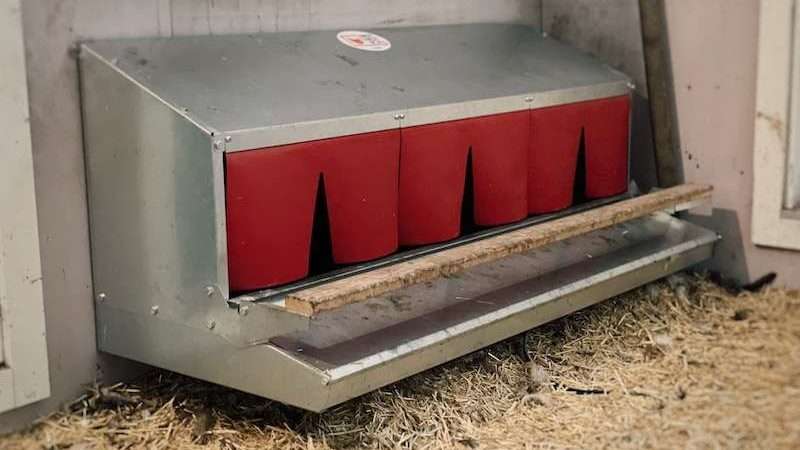

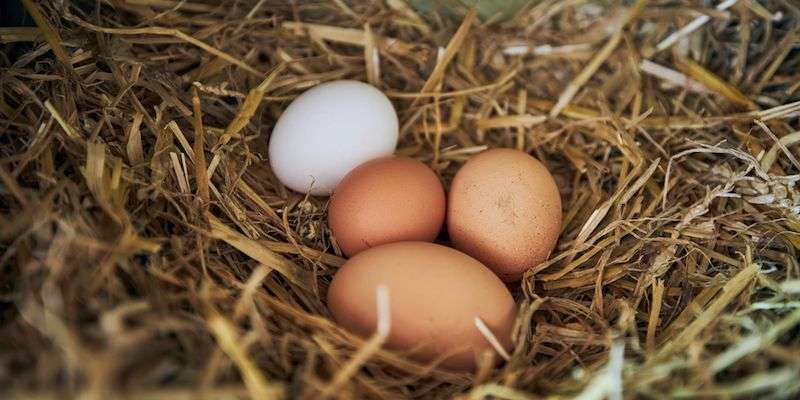
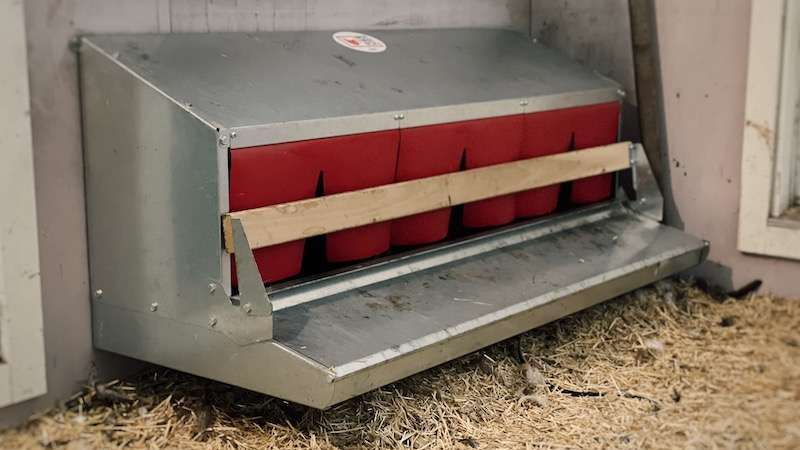


I want to to thank you for this good read!! I certainly loved every little bit of it. I have you bookmarked to look at new things you postÖ
You’re welcome and I’m so glad that you found it helpful. Glad to have you here 🙂
Those rollaway boxes are something else – no more pecking your hand! This is a great breakdown of all the options. Of course, no matter what you and I do, all the hens will insist of laying in the same box, right?!
The rollaway boxes are AMAZING! Worth every penny 🙂 Haha, right!!!
I had no idea there were different sizes! I just kind of went with what I found. We’ve got a group nesting box and they don’t seem to like it much. I have plans to tweak it since it takes up so much space. Thank you for this post! It really helps
I’m glad you found this helpful! I agree – my hens don’t seem to like the group nesting boxes much either, but they are sure more convenient for me! 🙂
I’m book marking this for when we get chickens. A whole lot of information that is extremely useful! Thank you.
Hooray! Best of luck to you and reach out if you need anything in the future!
Thank you for the information.
You’re welcome! 🙂
This is such a helpful post! We really did not put much thought into our nesting boxes, but thankfully they are working out fine for us!
That’s so great! Hens are quite adaptable 🙂
When we get chickens, we’ll probably start off cheap – milk crates… but the end goal will likely be those rollaway boxes! How cool!
I’ve heard from a lot of people that they love the milk crates! The rollout nest though is soooooo worth the money in my opinion! 🙂
I love reading all about how to make your ladies comfortable while doing their thing…laying eggs. It is a win-win situation: Make a comfortable station for your hens, and they will give you fruits of their labor. You write so well that it makes it fun to read, even if I would never raise any chickens.
Awww thank you, Mommo! I love reading your comments on here 🙂